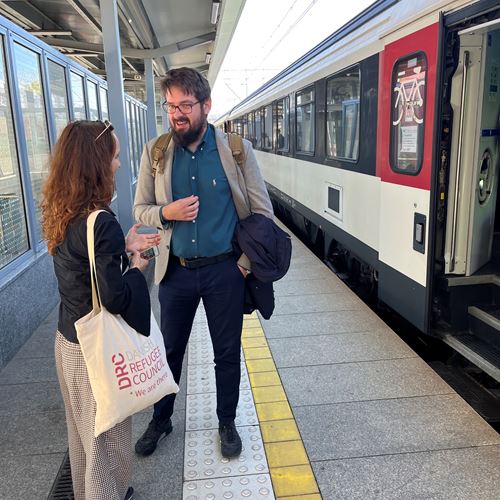Since DRC established its presence in Poland in 2022 to as part of the Ukraine crisis response, the organsation has increasingly promoted alternative transportation modes and carbon offsetting mechanisms. Vehicle fleet is used only when it is critically needed for field activities as usually the operation relies solely on public transport. It is estimated that, by choosing trains for medium and in country distances, emissions are cut by around 80%, a substantial difference over conventional car use.
“With DRC staff throughout the operation here in Poland, now making daily and monthly monitoring visits by train, we are drastically reducing our carbon footprint. This is how most of the organisations - including our 14 partners – now operate in Poland. Only if there is an emergency or a critical need to quickly reach a location in the field, do we use the reduced fleet of cars - such as mobile outreach activities. We also work right now on ways to mainstream more climate friendly solutions into our programming and how this paradigm and consciousness can be reflected in our activities for conflict and displacement affected communities,” tells Helena Lassen, Country Director for DRC Poland, Moldova & Romania.
The public transportation system in Poland is such that DRC does not resume a standard car fleet set up in the country. Most Polish cities have well-developed networks of public transport. Depending on the city, they include buses, trams, trolleybuses, trains, and underground trains. It is usually a good idea to buy a long-term ticket, as it is hard to avoid public transport.
In the past year, Poland saw a notable surge in rail travel, with over 342 million passengers, marking a remarkable 40% growth compared to the previous year This was partly due to the increased number of pendular movements of refugees in the country. Train was one of the main sources of public transport for Ukrainian refugees in the month after the Russian Federation-led armed conflict with some of the railway operators offering them free tickets on its services. Still, trains continue to be the main transportation mode as many as 30 000 people cross the Ukrainian-Polish border daily.
